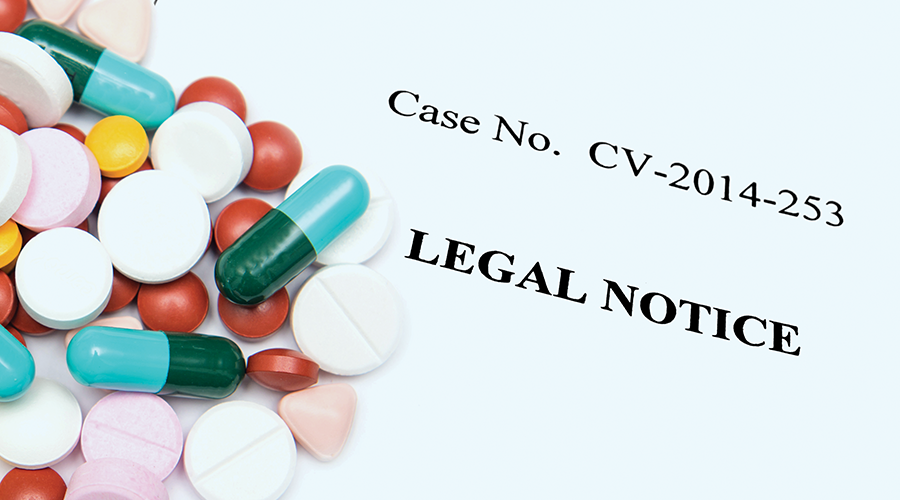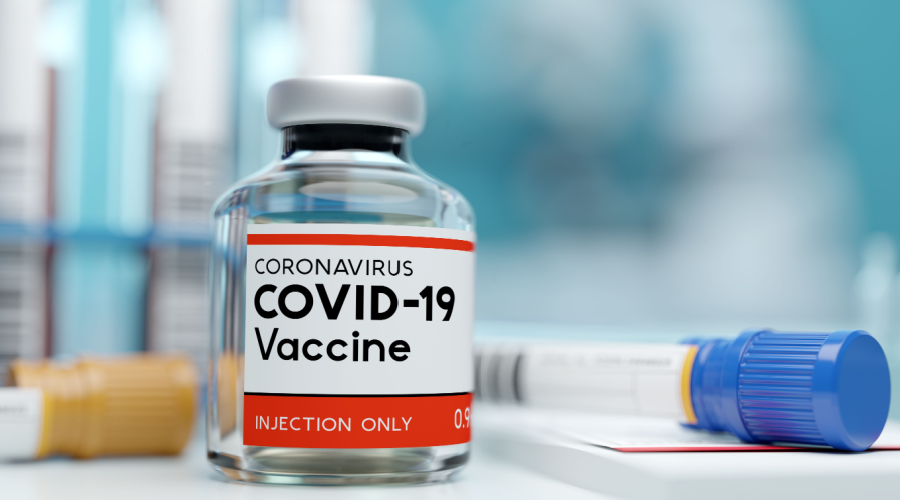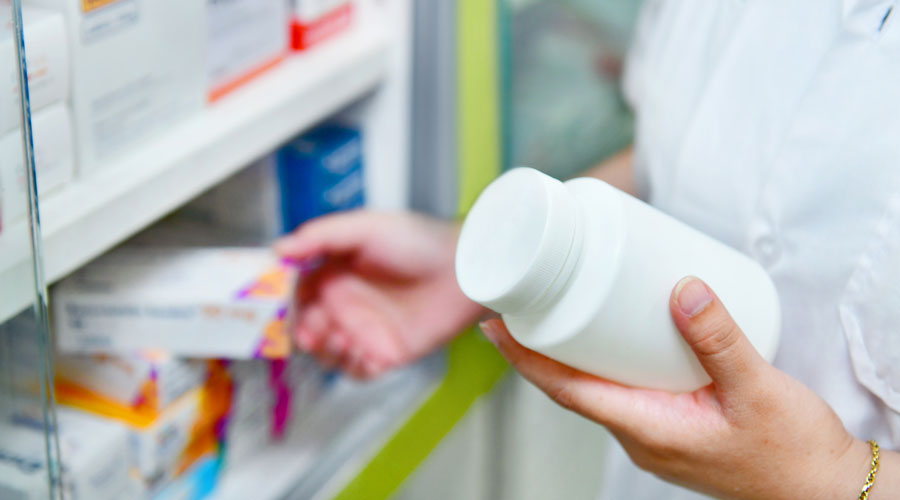In 2019, the average independent pharmacy dispensed over 58,000 prescriptions. With that high volume, errors are almost inevitable. These errors cause different levels of harm for your patients. If a pharmacist violates HIPAA, the patient’s private information will have been compromised, but if a pharmacy accidentally dispenses the wrong medication, a patient might need serious medical intervention or face deadly consequences. For errors both large and small, patients may seek legal recourse against the pharmacy.
“It’s not uncommon for a lawsuit to be filed when an error is made,” said Kristen Jones, a pharmacy risk management consultant at Pharmacists Mutual Insurance Company. And over the years, lawsuits have increased, Jones said. “It used to be infrequent, but more and more pharmacists are being named as defendants.”
Knowing which claims are most common can help you prepare a risk mitigation strategy to protect yourself and your staff from lawsuits.
Why pharmacies and pharmacists get sued
Claims against pharmacies and pharmacists typically fall into two categories: mechanical errors and intellectual errors.
Mechanical claims
Mechanical claims happen when an error occurs within the pharmacy workflow, and they make up the largest proportion of claims against pharmacies. “We have been collecting our pharmacy claims since 1989 and we have over 14,000 claims in our database. We’ve found over this time period that over 80 percent of claims are due to wrong drug, wrong dose, and wrong directions,” said Jones.
Wrong drug claims take the top spot as the most common claim made against pharmacies. Wrong drug errors often occur because pharmacists or technicians confuse lookalike and soundalike drugs, pull the wrong stock bottle, or have a difficult time reading a prescription.
Errors with certain drugs can result in more expensive claims. Jones said, “Typically, our number one offender is warfarin. You can imagine that making a mistake with a drug of that nature could be an expensive claim because the outcomes could be very bad.”
Compounding claims are also particularly costly, in both sterile and non-sterile settings. “The reason they are so expensive is that you lose a safety net when you’re doing the math and calculating the decimal points yourself,” Jones explained. “If you are grinding tablets on a thyroid prescription, you know exactly the amount that’s in that tablet. If you turn around and weigh the powder, there are all sorts of things that can go wrong. Your scale could not be set correctly or you do the calculations wrong.”
Intellectual claims
Intellectual errors happen when a pharmacist uses their skills and knowledge to make a decision, and the decision has a poor outcome. They may not counsel a patient properly, or not at all, so the patient ends up taking their medication incorrectly, or they don’t warn about the side effects of a drug.
HIPAA claims, where a pharmacist or pharmacy technician discloses medical information in a way that violates the patient’s privacy, also fall in this category. “Breaches of privacy are intellectual because they are based on a decision that was made or a lack of policies or training about confidential information,” Jones said.
Drug utilization review (DUR) claims, which occur when a pharmacist does something like failing to recognize an allergy or potential drug interaction, are the costliest on average of all the claims categorized by Pharmacists Mutual. In general, intellectual claims can end up being more expensive than mechanical claims, because where the mistake happened is not as cut-and-dried as a wrong drug or wrong strength scenario. This means both parties have to spend time and resources investigating what happened.
High Error Medications
A few medications tend to show up in claims more often than others. These drugs tend to have one or more of these traits: they are dispensed at a high volume, they have a narrow therapeutic index, or they come in a variety of different doses and strengths. Keep an eye out for these worst offenders:
- Warfarin Insulin
- Opioids Levothyroxine
- Methotrexate
- Amoxicillin
- Prednisone
- Amitriptyline
Source: Pharmacy Professional Liability: Lessons Learned from an Ongoing Study of Over 10,000 Claims, Pharmacists Mutual
From error to trial
The claims process starts for pharmacies as soon as they become aware an error has been made. A patient might come in to let them know that they dispensed the wrong drug. In a more dire scenario, a patient might end up at the hospital because they took the wrong drug, and the pharmacy will get a phone call. “Any time a pharmacist knows the patient has ingested the wrong medication or they know of an error, we ask they report it to the insurance company and we’ll set up a file for them,” said Jones.
But just because an error has occurred doesn’t mean it will eventually result in a lawsuit. After the insurance company has been notified, an investigation will begin. Claims adjusters will work with the pharmacy to find out exactly what happened. “Maybe the patient, at that point, just wanted to let you know there was an error,” Jones said. If the pharmacy handles the mistake with empathy and a commitment to improve the overall safety of their processes, they may avoid a lawsuit altogether.
Jones recalled a pharmacy that once gave someone the wrong medication, and as soon as they realized the mistake, they called the patient and instructed her to go to the ER immediately, since she’d already taken the wrong drug. Jones said, “When our adjuster called the woman to see if she wanted to file a claim, she said, ‘No, I’m not going to sue my pharmacist. They did everything they could to help me when they made a mistake.’ ” By being proactive and compassionately looking out for their patients’ best interests, many pharmacies will be able to sidestep the worst outcomes.
Top 5 Claims Against Pharmacies
Pharmacists Mutual has collected nearly three decades of claims against pharmacists and identified trends in the data. In 2017, these were the most common categories of claims:
- Wrong Drug
- Wrong Strength
- Drug Utilization Review
- Wrong Directions
- Compounding
When errors do result in a claim, adjusters do their best to work with the claimant to settle things before a lawsuit is filed, like by offering to pay any medical bills at cost. Even if a lawsuit is filed, that doesn’t necessarily mean the case is going to go to trial.
“If a lawsuit has been filed, we will hire counsel in the relevant town or state and go through an investigation process,” Jones explained. “It depends on how that process goes if we can reach a settlement, or if we have to go to mediation to reach a settlement, or if we end up going to trial.”
Going to trial is a worst-case scenario for pharmacies, both because it is expensive to hire all the relevant experts and because it’s a stressful experience for the pharmacist. Luckily, the vast majority of claims are settled before the trial stage is reached.
Risk management
The best way to prevent a lawsuit is to avoid making mistakes in the first place. Claims against pharmacies have actually been declining in recent years because of new technology that reduces risk. Bar codes, robotics, and physician order entry have all helped to decrease the number of claims, according to Pharmacist Mutual. However, while technology has reduced the pain of illegible handwriting, it has introduced new opportunities for error by accidentally selecting the wrong item on an electronic dropdown menu or checking the wrong box.
Pharmacies that have a solid risk management process can circumvent mistakes that could turn into costly lawsuits. Pharmacist Mutual has a four-step risk management cycle that helps pharmacies continually analyze and avoid risks.
1. Identify the risks in your pharmacy. With over 80 percent of pharmacy errors happening because of the wrong drug, wrong dose, or wrong direction, targeting those issues can cut your risk of error dramatically. Assess your current workflow to find out where errors could potentially occur, how often they occur, and if there are any drugs that frequently show up in your error log.
2. Create a plan to prevent errors. “It could be something as simple as barcode scanning, double checks by other pharmacists and techs, or Tallman lettering for lookalike and soundalike drugs,” Jones said. The solutions you come up with must be practical because if they take up too much time or effort, pharmacy staff members might end up taking shortcuts that could result in even more errors.
3. Implement the plan. “Train everybody on the new techniques and what you are doing to prevent the error,” Jones said. Education is crucial because if staff members know why the changes were made and how it will protect both patients and the pharmacy, they will be more likely to put in their best effort.
4. Monitor how the changes. Keep tabs on how your changes are affecting workflow and check to see if they are actually reducing risks. You may find that the training you’ve given employees wasn’t thorough enough, or that the new process could be improved even further.
Keep documentation of your processes and track your progress. If you decide to further tweak the system, analyze the results to ensure the changes are having the intended effects.
Professional protection
Before a claim is made against you, one of the best things you can do to protect yourself is to make sure that you are fully covered by insurance. It is increasingly common for the pharmacy where the error took place to get sued, and then the pharmacist or pharmacy technician who committed the error to be named separately in the lawsuit.
This is why it’s crucial to make sure you have both an insurance policy that covers your business and an additional personal professional liability policy. “It’s an excess policy that will cover a pharmacist twenty-four hours a day, seven days a week,” Jones said. “If they are volunteering at a clinic, working at a health fair, or giving advice to their neighbors, that excess policy would cover them in those situations.”
Having a personal professional liability policy will keep you covered in case there are any issues with the business’s insurance policy. If there’s a $1.5 million judgment, but the pharmacy’s insurance only covers $1 million, your personal professional liability insurance will cover the difference. Having a personal policy in your back pocket, Jones said, “allows you to control what risks you are taking.”
From the Magazine
This article was published in our quarterly print magazine, which covers relevant topics in greater depth featuring leading experts in the industry. Subscribe to receive the quarterly print issue in your mailbox. All registered independent pharmacies in the U.S. are eligible to receive a free subscription.
Read more articles from the December 2020 issue:
- Covid-19 and childhood vaccines: everything independent pharmacies need to know
- These are the most common Covid-19 fraud schemes targeting small business
- How Covid-19 relief will affect this year’s taxes for pharmacies
- How to bring in big revenue with a gifts and cards section
- Proven tips to resolve prior authorizations quickly and easily
- This pharmacy saves thousands on its cost of goods
- Why debt can be a valuable financial tool for independent pharmacies
- How to prevent the most common and most expensive pharmacy lawsuits
A Member-Owned Company Serving Independent Pharmacies
PBA Health is dedicated to helping independent pharmacies reach their full potential on the buy-side of their business. Founded and owned by pharmacists, PBA Health serves independent pharmacies with group purchasing services, wholesaler contract negotiations, proprietary purchasing tools, and more.
An HDA member, PBA Health operates its own NABP-accredited secondary wholesaler with more than 6,000 SKUs, including brands, generics, narcotics CII-CV, cold-storage products, and over-the-counter (OTC) products — offering the lowest prices in the secondary market.











